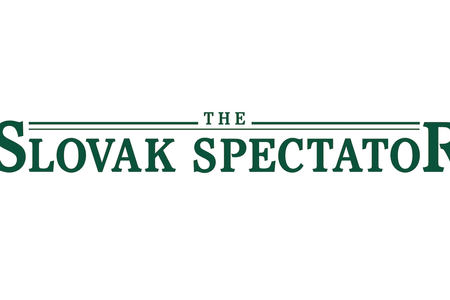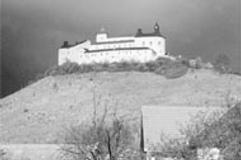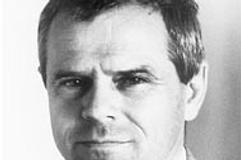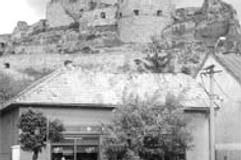Archive of articles - November 1998, page 6
If you desire to read an old article, use the search bar or select the publication date.
Remnants of Rožňava's mysterious Turkish, Hungarian past
Slovakia's southern lowlands stretch due east from Bratislava, gradually giving way to gently rolling hills bristling with beech, birch and pine. In the same way, the quiet villages that dot the landscape near Bratislava make room for the castles, palaces and caves of Slovakia's eastern reaches.Much of the region's charm comes from its Slovak-Hungarian heritage. Until 1918, the southern region from Bratislava past Košicewas part of Hungary. The Hungarian nobles who ruled the district tried to assimilate the Slovak peasants through a process known as "Magyarization".Looking around today, one would never suspect that places like Šahy, Fiľakovo and Hurbanovo had such a stormy history. Hungarian is still the dominant language spoken on the streets.
Community Grapevine
Christmas BazaarThe Dance for EuropeHash run on November 14
Pizzeria Saranda - Ristorante
Located just out of the centre opposite the YMCA cinema , Saranda looks like an ordinary restaurant. But once you take a trip up the stairs to the first floor, Saranda's plush red carpets and spacious lay-out will tell you that this place is far out of the daily eatery routine.The first thing that greets you as you enter is a warm and airy atmosphere, created by the wooden decor andthe enormous windows, which gaze down on the uninspiring environs of Šancová Street. Though this is supposed to be an Italian restaurant, the place is strewn with historical chairs and massive dark wooden tables, capable of seating six people comfortably. The walls of the room are painted a pleasant yellow, and are hung everywhere with small drawings.
Interest rates sharply down after repos
The Slovak crown remained steady in moderate trading within the period from October 28 to November 4. The crown was quoted between 7.5 and 8.8% on the weak side of the former currency basket band.We saw only a mild weakening of the crown on November 4 from around 7.6% to 8.8, but at the end of the day the crown was quoted at minus 8.2%. Domestic banks and clients moved the crown almost exclusively as foreign activity was still minimal. Spreads remained wide and volumes thin as intraday activity on the market is very low.Future developments are difficult to predict as the next customer with big volume interest could drive the market either way. Current technical analyses foresee bullish crown development, but the fundamentals remain weak.
Ivan Mikloš, Vice-Prem., Economy
Born in 1960 in Svidník in eastern Slovakia, Ivan Mikloš, Slovakia's new vice-Premier for Economy, is married with two children. Having studied and lectured at the Economic University in Bratislava, and having held a post-graduate fellowship at the London School of Economics Mikloš first entered politics from 1990 to 1991 as an advisor on economic transition.Following this appointment, Mikloš served as the Director of the Institute for Economic and Social Policy at the Government Office, and as Minister of Privatization from 1991 to 1993. Since 1993, he has been the director of an independent market research and consulting institute, MESA 10, which became famous for its sharp criticism of Premier Vladimír Mečiar's style of crony privatisation of national property. Since 1994, he has taught economics at Trnava University.
Culture Minister Milan Kňažko
Born in 1945 in Horné Plachtinice, Culture Minister Milan Kňažko has served time as a theatre stage technician and a miner. Kňažko is best known, however, for his work as a famous film and television actor. Kňažko is a graduate of the National Academy of Arts in Bratislava, and has trod the boards with the Slovak National Theatre.Kňažko was a co-founder of the Public Against Violence, the first democratic party to be created after the November 1989 revolution. He also co-founded the Movement for a Democratic Slovakia (HZDS), which he left in 1993 after Vladimír Mečiar became chairman.
Cabinet Profile
Slovakia's new coalition government was officially sworn in on October 30. The Slovak Spectator has profiled the cabinet below, and will feature interviews in the upcoming weeks with Ministers from the four coalition parties - the Slovak Democratic Coalition (SDK), the Party of Civic Understanding (SOP), the Party of the Hungarian Coalition (SMK) and the Party of the Democratic Left (SDL).Rofiles
More than they can chew
The new Slovak government took office full of stern resolution on October 30, promising to defend democracy and improve the moral tone of the country. Just the things Slovakia needed, perhaps, but a little bit prim for all that, and not a platform that promised much light amusement.The government's first foray into parliament, however, proved that its Calvinist political image had been a clever disguise, concealing a playful ignorance of the rules of parliamentary debate and a witty failure to map out an intelligent plan of action. What fun!The chief wiseacre was parliamentary speaker Jozef Migaš, who feigned a comical unfamiliarity with the basic rules of his job. Migaš is not a very tall or imposing figure, and as he approached the lectern to call the house to order, he found he had to lower the microphone from the level it normally rested at for former speaker Ivan Gašparovič.
Compaq takes over Digital
When two global information technology (IT) giants, Digital and Compaq, merged in June, the Slovak branches of each company felt the shockwaves of the deal.Digital Slovakia was renamed Compaq Slovakia, and experienced minor changes in its management structure. And though market players still claim that Slovak customers were more familiar with the Digital brand, Compaq managers are confident that in terms of revenue, the companies will earn more together than the sum produced by their individual parts."We are hoping that the acquisition will spur higher revenues than were produced by the formerly independent companies," said Jozef Jurkovič, sales and marketing manager at Compaq Slovakia. "We hope that in this case, one plus one will equal three."
Fiľakovo - the ghost of Turkish invasions past
An hour and a half southwest of Rožňava lies Fiľakovo, a small town near the border with Hungary. While the town is pleasant enough in itself, it is perhaps better known for the impressive castle ruin that frowns over the settlement from 65 meters above.Fiľakovo's town emblem, a palm tree on a green hill, bears testament to the 40 years it spent under Turkish rule. Unlike most other castles on the former Hungarian frontier, the Fiľakovo fortress was conquered during the Turkish invasion in 1554. The Turks then ruled here until 1593, when Counts Nicholas Pálffy and Christoph Tieffenbach reclaimed the site for Hungary.
- Ambulance hit by Russian drone goes on display in centre of Bratislava
- Bratislava’s embassy-backed events you don’t want to miss
- Slovak Matters: A flirtatious Easter of water and whipping
- Slovakia mourns Pope Francis, a shepherd of hope and humility Photo
- Slovakia’s public finances remain in deep trouble
- What is Pope Francis’s message to the powerful?
- Danish shoemaker to shut Slovak factory, axing 650 jobs in fresh blow to struggling region
- News digest: Finns air unseen video of Fico shooting, PM’s bloody jacket driven away by minister
- Ambulance hit by Russian drone goes on display in centre of Bratislava
- Bratislava’s embassy-backed events you don’t want to miss
- “Return not,” the ocean cried. But I returned for her
- Slovakia mourns Pope Francis, a shepherd of hope and humility Photo
- Slovakia’s public finances remain in deep trouble
- Slovak Matters: A flirtatious Easter of water and whipping
- When to shop over Easter: Opening hours for supermarkets in Slovakia
- Danish shoemaker to shut Slovak factory, axing 650 jobs in fresh blow to struggling region
- Ambulance hit by Russian drone goes on display in centre of Bratislava
- “Return not,” the ocean cried. But I returned for her
- Bratislava’s embassy-backed events you don’t want to miss
- The British Film Institute shines a light on Slovak cinema’s boldest chapter Video
- 3 free things to do in Bratislava in the next seven days
- Slovakia's latest basketball star is destined for great things in the USA
- When to shop over Easter: Opening hours for supermarkets in Slovakia
- US giant pulls plug on Slovak factory, axing 137 jobs
- “Return not,” the ocean cried. But I returned for her
- Ambulance hit by Russian drone goes on display in centre of Bratislava
- German shoemaker Lowa joins wave of factory closures in Slovakia
- 3 free things to do in Bratislava in the next seven days
- US giant pulls plug on Slovak factory, axing 137 jobs
- When to shop over Easter: Opening hours for supermarkets in Slovakia
- Danish shoemaker to shut Slovak factory, axing 650 jobs in fresh blow to struggling region
- Hundreds of people ousted from Bratislava’s Volkswagen
- What is Pope Francis’s message to the powerful?
- Slovakia mourns Pope Francis, a shepherd of hope and humility Photo
- Confetti, chants and history: Hejková’s dream goodbye after nearly 40 years at the top
- Slovakia’s public finances remain in deep trouble
- Ambulance hit by Russian drone goes on display in centre of Bratislava
- Why this gorge deserves a spot on your bucket list Photo
- The British Film Institute shines a light on Slovak cinema’s boldest chapter Video
- Bratislava’s embassy-backed events you don’t want to miss More articles ›






